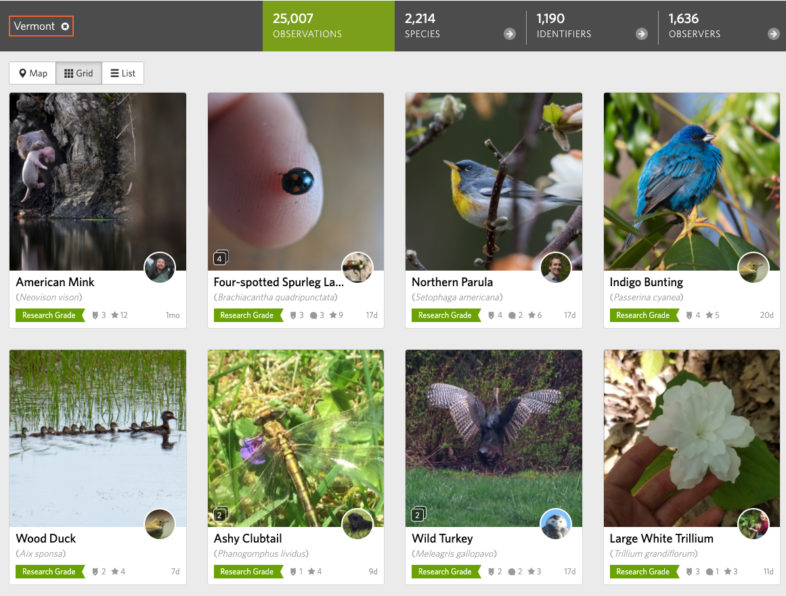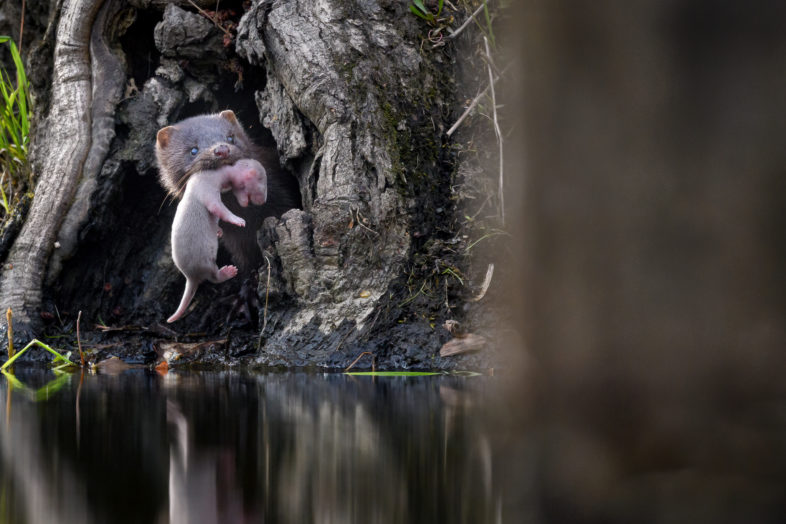And, we’re back! After much consideration, the VAL team has decided to make Tech Tip Tuesday a bi-weekly post. This will help us better prepare and identify new topics for each article. As the weather continues to warm, it will also give us all greater flexibility to tackle the outdoor projects that patiently waited for our attention all winter long. We still encourage you to reach out, ask questions, and suggest new topics! If you need a refresher on a past TTT topic, you can find those on the VAL website.
This Week on Tech Tip Tuesday
A couple months back, I wrote an article about using iNaturalist as a teaching tool. To me, iNaturalist’s greatest strength is its ability to make teaching about nature accessible to everyone. Between its A.I. and other users helping with identifications, and its taxa info pages providing background information, iNaturalist can be used for creating a well-rounded educational experience in nature, regardless of the instructor’s experience level.
The one downside of iNaturalist is the age limitation—users need to be over 13 years old or receive parental permission to join. While there are still ways to use it as a teaching tool with younger naturalists, there is another program created by iNaturalist that is better suited to those under 13. This program is Seek. Seek is similar to iNaturalist, however its identification process is simpler and it provides greater security for young users. Just like iNaturalist, Seek is free, although it’s only available on your smartphone.
Seek’s primary function is identification. To identify a plant, animal, or fungi using Seek, you open the camera through the app and point it at the thing you want to identify. Before taking the photo, it will start giving you feedback about what you’re seeing by either identifying it or offering suggestions about how to improve your identification. Once the identification is as specific as possible, you can take a photo and it will get added to your Seek observations. Seek will also provide links to additional information about the species you’re observing, similar to iNaturalist’s taxa info pages.
While Seek does share these similarities with iNaturalist, there are also some important differences you should be aware of. Unlike iNaturalist, Seek will not store or share the data you collect, nor will it collect personally identifiable information. It automatically obscures your location, hiding your exact location while still allowing you to receive accurate species suggestions. You also don’t create an account when you get started. All these measures are in place to ensure safety, making this app accessible to children under 13. If someone over 13 is using it, they have an option to sign into their iNaturalist account from Seek and share their observations.
Seek also has some additional features that make it more engaging for children. On Seek, users can earn badges for the taxa they encounter and take part in challenges. The challenge topics vary, and all are geared towards helping young users learn more about broader concepts in the natural world.
If you’re interested in using Seek with a young naturalist in your life, I highly recommend reading through the user guide. What I provided above was a very brief overview and there is so much more that you can learn about this amazing tool!
TTT Task of the Week
This week, I want you to consider trying out Seek with a young naturalist in your life, whether that be for a class or just a fun family activity. You can download the app from whichever store you generally use. Read through the user guide and try out one of the challenges. I won’t be able to see any of your discoveries, however I would be interested in knowing what you think.
That’s all for this week! Thank you for helping us map Vermont’s biodiversity, stay safe, and happy observing!





